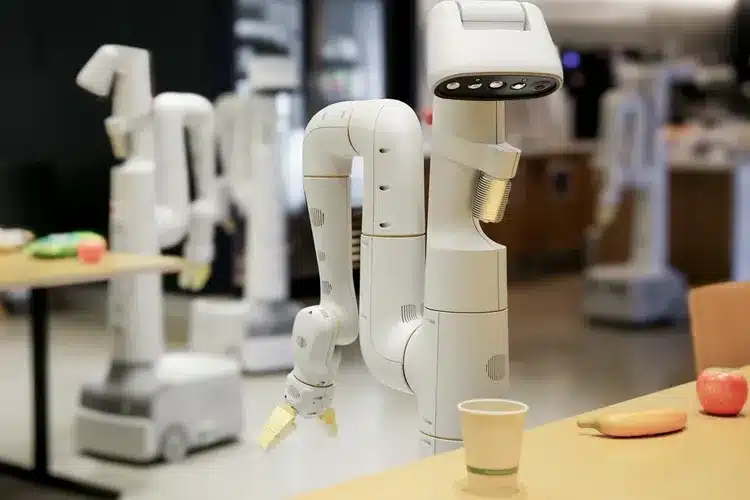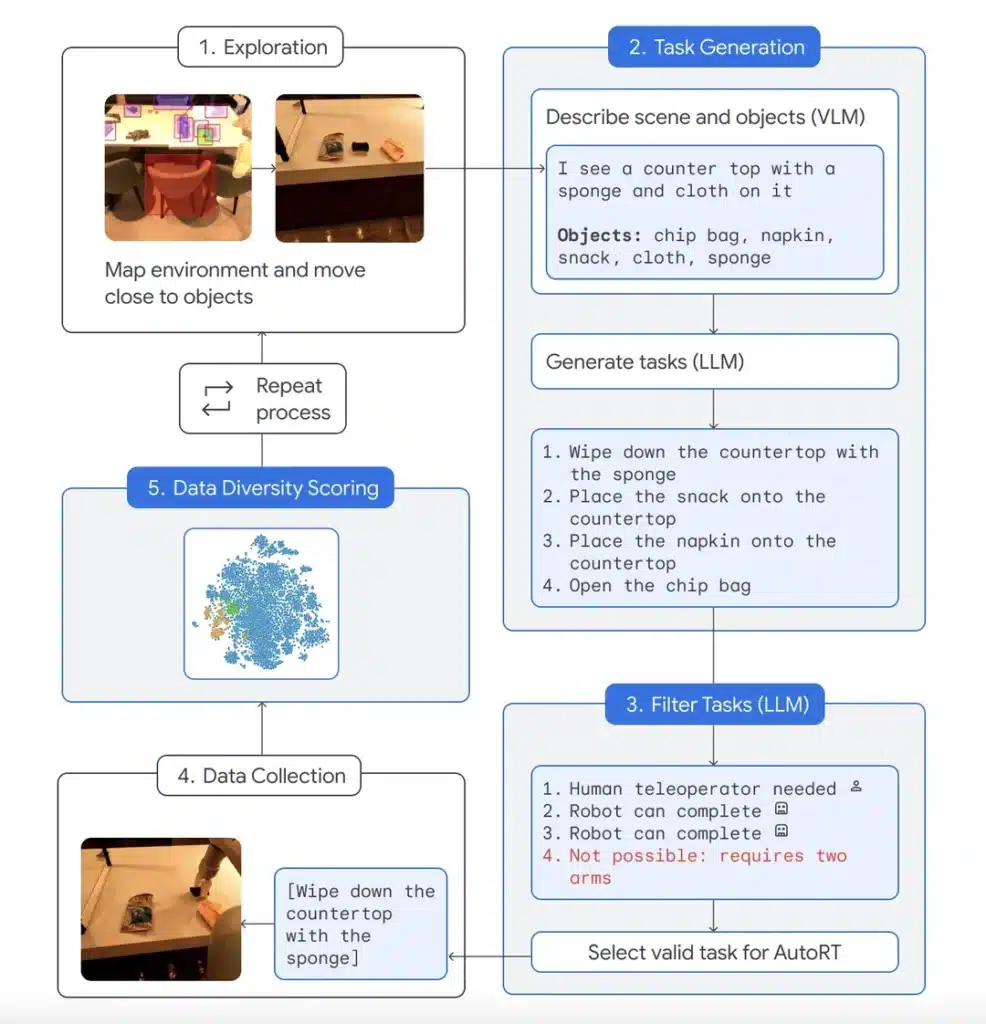
Google DeepMind has just unveiled several new technologies to make robots safer, faster and more efficient. These innovations could play a key role in the development of future general-purpose humanoid robots. Discover AutoRT, SARA-RT and RT-Trajectory!
AI and robots are developing at breakneck speed, and will soon surpass humans both mentally and physically. This has its advantages, but what happens if we lose control? ?
There is a real risk that machines will decide to rebel against us, or even annihilate us simply because we’ve been perceive us as an obstacle on the road to their goals.. This is one of the major fears associated with this booming technology.
In order to avoid such a disaster, Google DeepMind researchers have just unveiled new advances that should enable robots to take faster, more relevant and safer decisions.
A Robot Constitution inspired by Isaac Asimov
One of these innovations is a system for collecting training data while respecting a “Robot Constitution”.. The aim? To ensure that robots can perform all kinds of tasks while preserving human safety.
Thus, the AutoRT data collection system created by Google can use a visual language model (VLM) and a large language model (LLM) working in concert to enable the robot to understand its environment, adapt to unknown conditions, and decide on appropriate actions.
For its part, the Robot Constitution is a set of ” prompts focused on safety “ indicating that the LLM should avoid tasks involving humans, animals, sharp objects or electrical appliances.
This concept of constitution is directly inspired by ” Three Laws of Robotics “created by Isaac Asimov one of the most famous science-fiction novels, published in 1942. One of these laws was thata robot must not injure a human being.
Google deployed 53 bots to conduct thousands of tests
To test this system, Google has deployed a fleet of 53 AutoRT robots over a 7-month period in four offices and carried out 77,000 tests.
To further enhance security, DeepMind has programmed the robots to stop automatically if the force of their joints exceeds a certain threshold. A physical switch has also been included to allow human operators to deactivate them.
Some machines were controlled remotely by human operators, others were based on script or autonomously via the AI model Google Robot Transformer (RT-2).

A decision-making process based on dialogue between 2 AIs
As Google explains on its blog, ” for each robot, the system uses a VLM to understand its environment and objects in its field of vision “. Based on the camera, this model helps the robot to identify objects around it.
This is an essential capability for a robot released in an environment such as an office or homebecause the robot may have to adapt to the presence of new people or to objects changing location.
Subsequently, ” an LLM suggests a list of creative tasks that the robot could perform “. This might involve placing a snack on a counter, for example, or bringing in reams of paper for the printer. The LLM also plays the role of decision-maker in selecting the task to be carried out.

UTO-RT, SARA-RT and RT-Trajectory: 3 new techs unveiled by DeepMind
Alongside these security technologies, DeepMind has also unveiled the SARA-RT neural network architecture designed to make Robotic Transformer (RT-2) faster and more accurate.
According to the official blog post, “ Transformers are powerful, but can be limited by the demand for computing power, which slows their decision-making “.
The company has also announced RT-Trajectorywhich helps robots to perform specific physical tasks using 2D drawings. For example, this could help a machine to wipe a table with a cloth.
A crucial experiment for the future of robotics
The robots used in this test were very minimalist, with only a camera, a robotic arm and a mobile base.
However, the fruit of these experiments could be very useful for future humanoid robots like the Tesla Optimus or the Apptronik Apollo, which Nasa plans to use to explore the moon and Mars…
Numerous companies are currently developing such robots, designed to be able to perform any manual task, and safety is an essential point that must not be overlooked or there will be serious consequences!